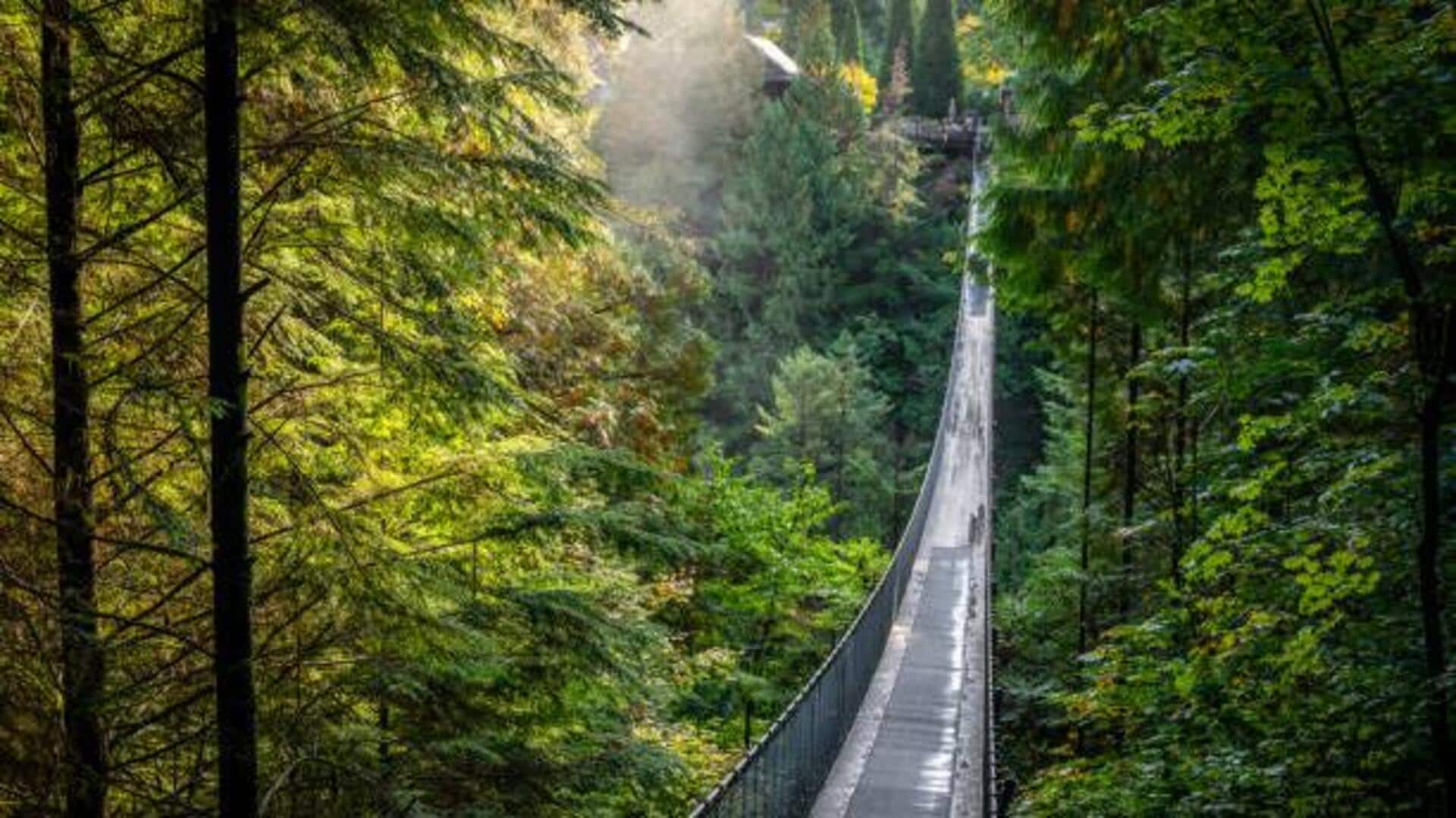
Explore Costa Rica's rainforest on suspended bridges
What's the story
Costa Rica's rainforests give you the unique opportunity to explore nature from above through its suspended bridges. The bridges offer an unparalleled view of the lush canopy, giving the visitors an experience of the diverse flora and fauna that is both thrilling and educational. Walking across them, one can witness the vibrant ecosystem thriving in this tropical paradise, making it a must-visit for nature enthusiasts and adventure seekers alike.
Timing tips
Best time to visit Costa Rica's rainforests
The ideal time to visit Costa Rica's rainforests is during the dry season, which runs from December to April. During these months, there is less rainfall, making it easier and safer to hike the suspended bridges. The weather is generally warm and pleasant, providing clear skies for better visibility of wildlife and scenic views. Planning your trip during this period ensures you make the most out of your rainforest adventure.
Top spots
Popular suspended bridge locations
Some of the most popular spots for suspended bridge hikes are Monteverde Cloud Forest Reserve and Arenal Hanging Bridges Park. Monteverde has a number of trails with different difficulty levels, while Arenal offers mind-blowing views of Arenal Volcano along with its amazing biodiversity. Both places are well-maintained and have guides who can make your experience more enjoyable by providing insights about the local ecosystem.
Safety first
Safety tips for hiking suspended bridges
When hiking suspended bridges in Costa Rica's rainforests, safety should be your top priority. Always wear sturdy footwear with good grip to prevent slipping on wet surfaces. It's advisable to go with a guide who knows the terrain well and can assist in case of emergencies. Keep an eye on weather conditions, as sudden rains can make trails slippery and challenging.
Packing essentials
What to bring on your hike
Packing right for your hike is critical for comfort and safety. Carry light clothes ideal for humid weather and a waterproof jacket in case it rains unexpectedly. You may also want to carry water bottles to keep yourself hydrated during your trek, as well as binoculars or cameras if you want to photograph wildlife from a distance without disturbing them directly.